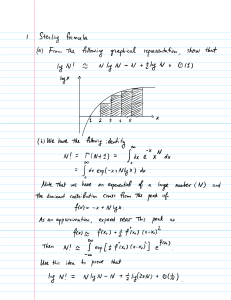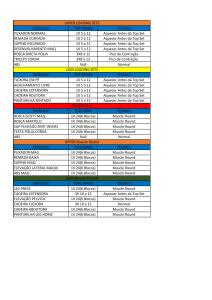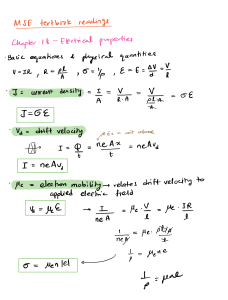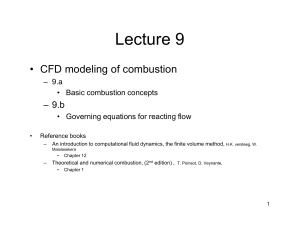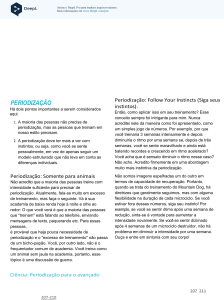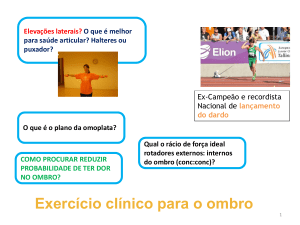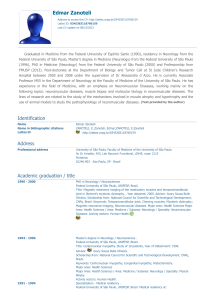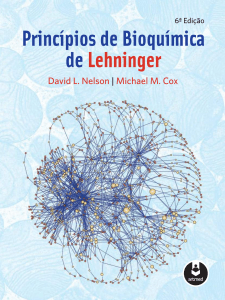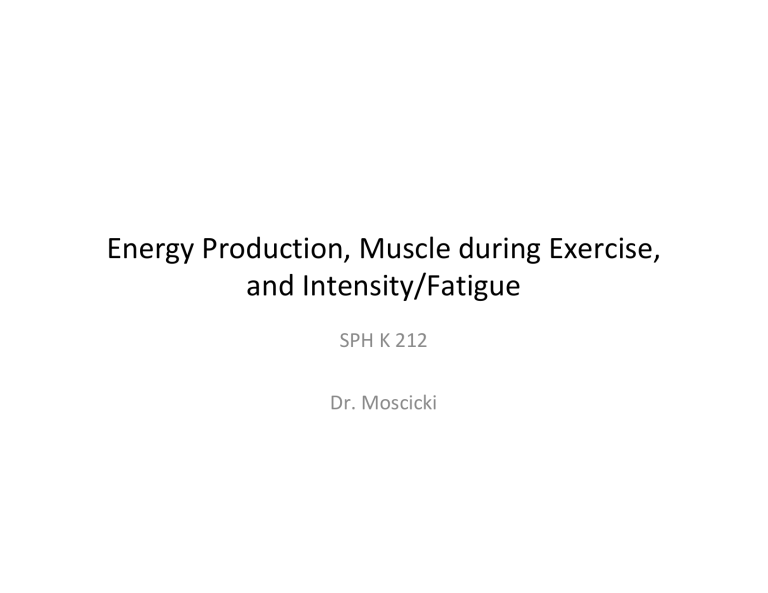
Energy Production, Muscle during Exercise, and Intensity/Fatigue SPH K 212 Dr. Moscicki Figure 2.1 Energy for Cellular Activity Energy Form Conversions • Energy is easily converted from one form to another • Law of Energy Conservation – Energy can’t be lost, just converted in to another form – Though not near 100% efficient • Some energy is lost as heat • That is why you get hot when you workout. Energy system basics • ATP (adenosine triphosphate) is the primary currency of energy in the human body • We use energy system to replenish ATP levels in active muscles during activity Energy Systems and Fatigue • Different types of muscle primarily rely on different means of energy production • Two common categories: – Anaerobic • w/o oxygen – Aerobic • w/ oxygen Processes to Replenish ATP 1. 2. 3. Phospho-Creatine Glycolysis Mitochondrial Respiration 1 Phospho-Creatine 3 Krebs Cycle 2 Electron Transport Enzyme Basics EnzymeProtein based structure used to catalyze biochemical reactions Enzymatic Pathway & Control Overview of energy systems Lactate + H+ H2O + CO2 ATP-PCr System • Anaerobic • ATP yield: 1 ATP:1 PCr • Duration: ~10 seconds • Because ATP stores are very limited, this pathway is used to reassemble ATP Glycolytic System • • • • Anaerobic when directly utilizing Glycolytic enzymes ATP yield: 2 ATP / glucose Duration: 1 to 2 min Breakdown of glucose via glycolysis Overview of energy systems 1 atp 2 atp Heat Lactate + H+ H2O + CO2 Oxidative System • • • Aerobic (adequate O2 required) ATP yield: depends on substrate – 32 to 33 ATP/1 glucose – 100+ ATP/1 Fatty Acid Duration: steady supply for hours Krebs cycle Fuel Utilization vs Intensity Overall summary of Metabolism Lactate + H+ MUSCLE USE AND CONTROL Skeletal Muscle • Structure – 100’s to 1,000’s of muscle fibers(cells) controlled by many neurons Skeletal Muscle • Muscle fibers are controlled in groups called motor units • Motor unit – A single motor neuron and all the muscle fibers it innervates (i.e.- connects to) – Each neuron will innervate many fiber around the muscle Motor units Recruitment by Intensity Type I Slow Twitch Type IIa Fast Twitch More Mitochondria Motor Unit Recruitment Type IIx Fast Twitch Less Mitochondria Low Force/Slow Tasks High Force/Fast Tasks Muscle force production • Look at type of activity – Walking/Jogging- low force activities that rely heavily on Type I/Slow Motor Units • Can perform long bouts due to Aerobic energy production – Sprinting is a high force activity relying heavily on Type II/Fast Motor Units • Fatigue quickly Energy systems and Fatigue 1 atp 2 atp Heat Lactate + H+ H2O + CO2 Reasons for Fatigue Relative to Intensity High Intensity short activity – Short time span • Reasons for fatigue – CP system depleted slowing ATP resynthesis – Build up of: • Acidic byproducts – Hydrogen builds up • Waste byproducts Lower Intensity long activity – Long time span • Reasons for fatigue (Should be able to make ATP fast enough) – Run out of fuel stores for energy pathways • Glycogen stores depleted – Dehydration – Damage to muscles – Heat • End Review- Not in your notes OTHER SYSTEMS RESPONSE TO EXERCISING SKELETAL MUSCLE Changes in Body leading to Exercise Response • Neural response – Thinking about exercise and actually contracting muscles lead to the changes – Epinephrine release (among other hormones) • Chemical changes – Byproducts from active skeletal muscle get into blood stream and lead to increase activity of other systems • CO2 and H+ Cardiovascular system • • • • • é Heart rate é Stroke volume é Cardiac Output é Blood pressure Redirect blood flow around the body – Shunt blood to active muscle Respiratory System • Due to CO2 in the blood, respiratory centers are excited • é depth of breathing • é rate of breathing Skin Response • Due to increase in Heat build up from energy metabolism • é blood flow to skin • é sweating
